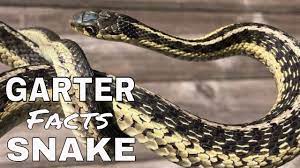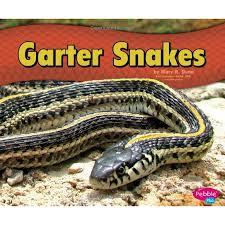Garter snakes are one of the most commonly encountered reptiles across North America, often found in backyards, gardens, and wild landscapes. Despite their prevalence, many people know little about these fascinating creatures. In this guide, we’ll delve into the habitat and behavior of the garter snake, uncovering insights into their natural environments, behaviors, and adaptations. By understanding these snakes better, we can appreciate their role in the ecosystem and learn how to coexist with them.
What Is a Garter Snake?
The term “garter snake” refers to a genus of snakes known scientifically as Thamnophis. These non-venomous reptiles are widely distributed throughout North America, with several species and subspecies found across different regions. They are easily recognizable due to their slender bodies, typically marked with three longitudinal stripes running down the length of their bodies. The stripes are usually yellow, white, or greenish, set against a background of brown, gray, or black. This coloration provides camouflage in their natural habitats.
The garter snake is a versatile species that has adapted to a variety of habitats and is known for its diverse diet and behaviors. Unlike many other snakes, they are often found near water sources, but their adaptability allows them to thrive in both wet and dry environments.
Garter Snake Habitats
Understanding the preferred habitats of garter snakes is essential to appreciating how these reptiles survive and thrive in the wild. The primary factor influencing their habitat selection is the availability of cover and food sources.
Wetlands and Marshes
Garter snakes are commonly found near wetlands, marshes, ponds, and streams. These environments provide them with abundant food sources such as frogs, small fish, and insects. The presence of tall grasses and water plants gives garter snakes the necessary cover to hide from predators while hunting for food. In fact, aquatic garter snake species, such as the ribbon snake (Thamnophis sauritus), are particularly adapted to wetland areas and can often be seen swimming in shallow waters.
Forests and Woodlands
Forests and woodlands also serve as suitable habitats for garter snakes, especially those located near water bodies. The leaf litter, fallen logs, and underbrush in forested areas offer excellent hiding spots for these snakes, allowing them to hunt small rodents, earthworms, and other prey. In colder regions, garter snakes often seek out wooded areas for brumation—a hibernation-like state—during the winter months.

Grasslands and Meadows
While garter snakes are frequently associated with wet habitats, they are also found in drier environments such as grasslands and meadows. These open areas provide a wealth of insects and small mammals for garter snakes to feed on. In grasslands, they take advantage of tall grasses to stay hidden from predators, often basking in the sun during cooler times of the day to regulate their body temperature.
Urban and Suburban Areas
It’s not uncommon to find garter snakes in urban and suburban areas, especially near gardens, parks, and ponds. In these locations, they often feed on pests such as slugs, snails, and mice, making them beneficial for pest control. Garter snakes in urban settings may seek shelter under rocks, wood piles, or garden debris, which mimic the natural cover found in the wild.
The Ideal Garter Snake Environment
For those interested in attracting garter snakes to their yard or garden for pest control, creating a suitable habitat involves providing essential elements such as cover, a water source, and food. Planting native grasses, shrubs, and ground cover can help create hiding spots, while adding a small pond or water feature can attract prey like frogs and insects. Avoid using pesticides, as these can harm garter snakes and their food sources.
Garter Snake Behavior
The behaviors exhibited by garter snakes are as diverse as their habitats. These reptiles display a range of activities related to hunting, mating, and self-defense, each adapted to their surroundings.
Hunting and Feeding Habits
Garter snakes are opportunistic feeders, meaning they eat a variety of prey based on what is available in their environment. Their diet primarily consists of amphibians, small fish, earthworms, and insects. Some species, like the aquatic garter snake, are adept at catching prey in the water, while others hunt on land. Garter snakes use their keen sense of smell, aided by the Jacobson’s organ located in the roof of their mouth, to detect chemical signals from potential prey.
Their hunting style is typically ambush-based, lying in wait until an unsuspecting animal comes close enough to strike. However, they are also known to actively pursue prey if the opportunity arises.
Mating and Reproduction
Garter snakes exhibit fascinating behaviors during the mating season, which usually occurs in spring after brumation. Males emerge from their winter dens first, waiting for the females to surface. When a female emerges, several males may surround her, forming what is known as a “mating ball.” In this writhing mass, males compete to mate with the female, and only one will succeed.
Garter snakes are ovoviviparous, meaning that females give birth to live young rather than laying eggs. A female garter snake can give birth to anywhere from 10 to 40 offspring at a time, depending on her size and the species. The young are independent from birth and must fend for themselves.
Brumation: A Winter Survival Strategy
In colder regions, garter snakes undergo a period of brumation, a state similar to hibernation in mammals. During brumation, their metabolic rate drops significantly, allowing them to survive the winter without eating. Garter snakes often seek out communal dens, known as hibernacula, where they can brumate together to conserve body heat. These dens may be located in crevices, underground burrows, or rock piles.
Defensive Behaviors
When threatened, garter snakes employ various defense mechanisms to ward off predators. They may flatten their bodies to appear larger, release a foul-smelling musk from their scent glands, or perform mock strikes to scare away potential threats. Although non-venomous, garter snakes do possess mild venom in their saliva, which helps subdue small prey. The venom is not harmful to humans but can cause minor irritation in some cases.
Garter Snakes’ Role in the Ecosystem
Garter snakes play an essential role in maintaining the balance of their ecosystems. By preying on a variety of small animals, they help control populations of pests such as insects and rodents. In turn, garter snakes serve as a food source for larger predators, including birds of prey, raccoons, and foxes. Their presence indicates a healthy, functioning ecosystem, as they contribute to the natural checks and balances within their habitat.
How to Identify Garter Snake Species
Although there are many garter snake species, some common features make identification easier. Here are a few distinguishing characteristics to look for:
Stripes: Most garter snakes have three stripes running down the length of their bodies. The stripes can be yellow, white, or greenish, set against a darker background.
Body Size and Shape: Garter snakes are generally slender, with adults ranging from 18 to 54 inches in length.
Color Variations: Depending on the species, garter snakes can display various color patterns, including checkered or spotted designs alongside their stripes.
Common Garter Snake Species in North America
Common Garter Snake (Thamnophis sirtalis)
Found across most of North America, it is the most widespread species.
Features a variety of color patterns but always with three distinctive stripes.
Ribbon Snake (Thamnophis sauritus)
Recognizable by its longer and more slender body.
Prefers wetter habitats and is often seen near water.
Western Terrestrial Garter Snake (Thamnophis elegans)
Found in the western United States and parts of Canada.
Displays more color variability, including stripes, spots, or a combination.
Plains Garter Snake (Thamnophis radix)
Inhabits central North America, particularly in grasslands.
Characterized by a yellow or orange dorsal stripe.
Garter Snake Myths and Misconceptions
Despite being harmless, garter snakes are sometimes feared due to myths and misconceptions. Here are some common myths debunked:
Myth: Garter snakes are dangerous to humans.
Fact: Garter snakes are non-venomous and pose no threat to humans. Their mild venom is only effective on small prey.
Myth: All garter snakes are water snakes.
Fact: While some species prefer aquatic habitats, others thrive in dry environments like grasslands and woodlands.
Myth: Garter snakes are aggressive.
Fact: Garter snakes are generally docile and prefer to flee rather than confront threats. They may display defensive behaviors when cornered, but they are not aggressive.
Conservation Status of Garter Snakes
Most garter snake species are not considered endangered and have stable populations. However, some species, such as the San Francisco garter snake (Thamnophis sirtalis tetrataenia), are listed as endangered due to habitat loss and human activity. Conservation efforts focus on preserving natural habitats and preventing pollution in wetland areas to ensure these snakes continue to thrive.
Coexisting with Garter Snakes
If you encounter a garter snake in your yard, there is no need to panic. These snakes are beneficial for pest control and pose no harm. To encourage coexistence:
Provide Natural Cover:
Let leaf litter, rocks, or wood piles remain undisturbed.
Avoid Pesticides:
Chemicals can harm snakes and their prey.
Create a Water Source:
A small pond can attract prey and provide a habitat for garter snakes.
Conclusion
The garter snake is a resilient and adaptable species with a wide range of habitats and behaviors. From wetlands to grasslands, these snakes can thrive in various environments while playing a crucial role in pest control and ecosystem health. By understanding their habits, we can appreciate their presence and learn to live alongside them harmoniously. Whether you find garter snakes in your garden or out in the wild, remember that these non-venomous reptiles are an important part of nature’s intricate web.




